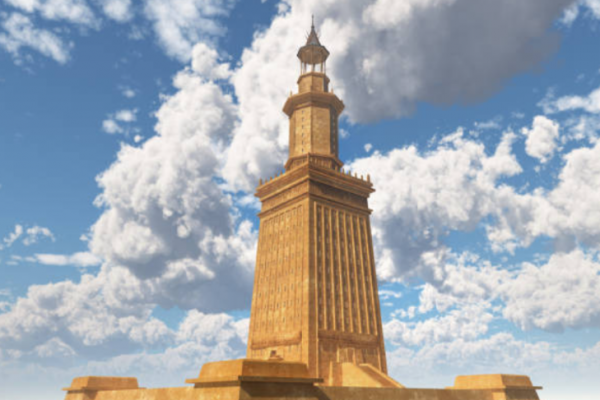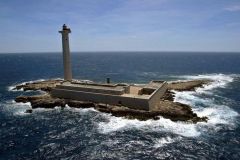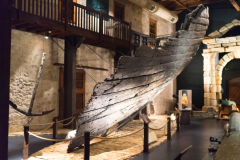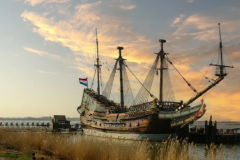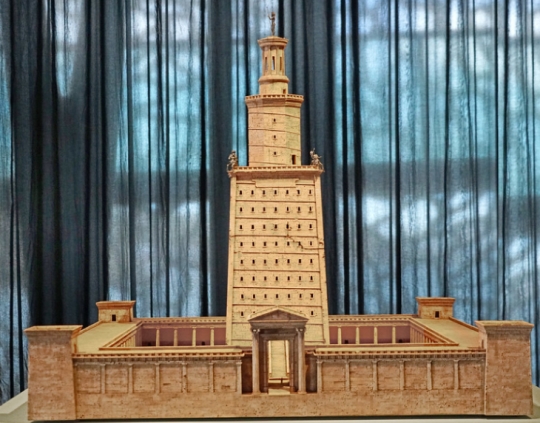
In the 4th century BC, the last of the Seven Wonders of the World was built in Alexandria, then the capital of Egypt. The tower, designed to guide navigators as they approached a low, dangerous coastline, was christened the '' Pharos named after the island on which it was built. Today, underwater archaeology is reviving the history of this submerged nautical heritage.
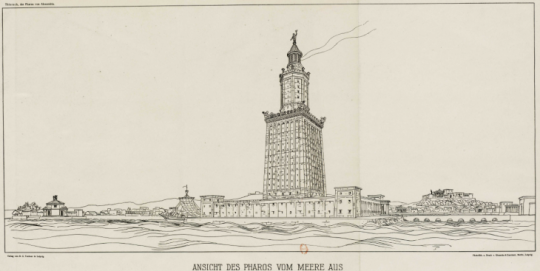
A monumental construction project
Although founded by Alexander the Great in 331 BC, it was the visionary initiative of Ptolemy I Soter, around 300 BC, that brought fame to the city of Alexandria. Intended to guide ships and symbolize the city's power, the construction of a massive lighthouse was ordered. Twenty years later, his son Ptolemy II completed this colossal project. Throughout antiquity, Alexandria flourished as a center of maritime trade, taking advantage of its two natural harbors strategically located on the Nile delta: the Grand Port and the second, named Eunostos or ''Port of happy return''.
Attributed to the architect Sostratus of Cnidus, the lighthouse stands on the islet of Pharos, facing the ports of Alexandria. The mainland was linked to the island of Pharos by a causeway, the Heptastadion 1.2 km long. Dedicated to Zeus Soter (liberator), whose dedicatory inscription on the tower was made of half-meter-high letters, and to Proteus, the Greek sea god known as the "old man of the sea", it was designed to guide and protect sailors.
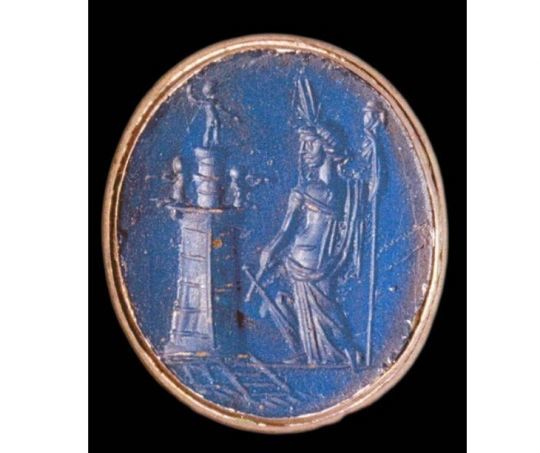
Strabo, the Greek geographer and traveller, wrote:
''This very extremity of the island is a rock, bathed by the sea on all sides, with a tower of the same name as the island, admirably built of white marble, with several storeys. Sostratus de Cnide, a friend of kings, erected it for the safety of sailors, as the inscription indicates. For as the coast on either side is low and without harbours, with reefs and shallows, a high and visible mark was necessary to enable navigators coming from the open sea to direct their course exactly to the entrance of the harbour.'' (Geography, 17.1)
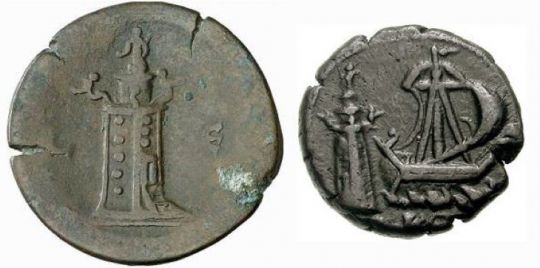

Although other ancient cities had navigational aids, the Alexandria lighthouse stands out for its monumental character. According to Jean-Yves Empereur, specialist in underwater archaeology and founder of the Centre d'études alexandrines (CEAlex), the lighthouse 135 meters high, its fire shone for 100 nautical miles, a noria of horses and pack animals climbed to its summit via an interior ramp, fuel burned day and night, and hundreds of rooms housed the men dedicated to its operation. After the pyramids of Giza, the lighthouse is the tallest structure in the world built by human hands at this time. A fire, probably fuelled by oil, is kept burning at the top of the tower to make it visible at night. According to Arab sources, a mirror - probably made of polished bronze - reflects the night-time flame over a greater distance towards the sea. During the day, it serves as a solar reflector.
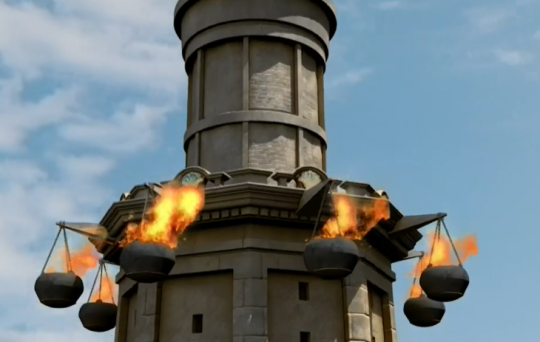
An inspiring heritage
The Alexandria lighthouse may not have been the first of its kind for ancient mariners, but it was certainly the first lighthouse in terms of monumentality. The Aegean island of Thasos was already known to have a lighthouse-tower in the Archaic period.
Listed as one of the Seven Wonders, the Alexandria lighthouse is such a landmark as a model lighthouse tower that the term "lighthouse tower" has been coined pharos "This type of structure, designed to facilitate navigation, has been adopted in many languages. It is widely reproduced throughout the world, serving to protect harbours and sailors from antiquity to the present day. One example is the Cordouan lighthouse, designed in its initial version by the architect Louis de Foix, who convinced Henri III of his ability to build a lighthouse as prestigious as the famous Egyptian model.
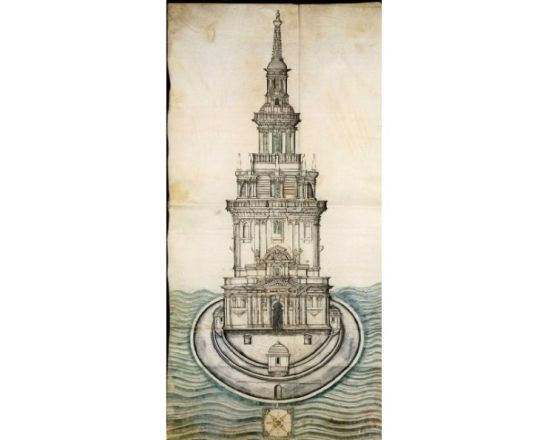
What happened to the Alexandria lighthouse?
Alexandria continued to thrive within the Roman Empire, emerging as the second most influential city in the ancient world, and remaining the predominant port in the eastern Mediterranean. Numerous seismic tremors have seriously damaged the Alexandria lighthouse over the centuries. However, records show regular repairs and extensions, including the addition of a domed mosque around 1000 A.D. and a major reconstruction around 1161 A.D. Some historians suggest that the tower influenced the architecture of Arab minarets.
The lighthouse disappeared from historical records after the 14th century AD, probably finally destroyed by another earthquake in the 1330s AD. The granite foundations of the tower were reused in the construction of the medieval fort of Qait Bay, built in the 15th century AD. The sea level in the area has since risen, covering all remains of the toppled structure.
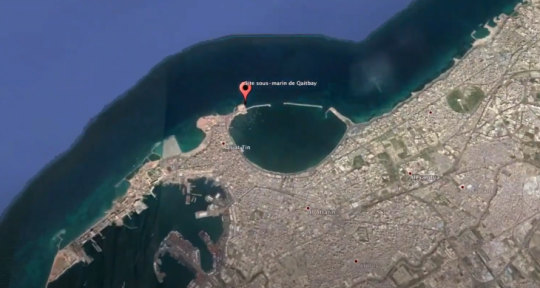
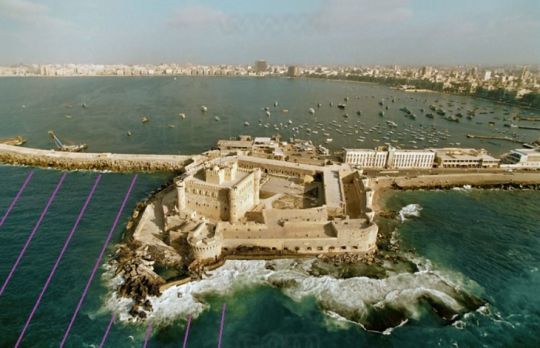
Underwater research
The original location of the lighthouse was at the tip of the islet, at the eastern end of the ancient island of Pharos, in front of the city on the right as you enter the Grand Port. This area, now submerged due to the progressive subsidence of Alexandria's coastline since antiquity, extends over some 3 hectares.
The CEAlex has been excavating the site since 1994. Analysis of these discoveries has identified the ruins of three distinct structures. The north-western part contains the remains of the lighthouse itself, while a Roman-era construction has been identified in the north-east. In the southern part of the site, a coastal protection dyke runs along the northeast side of the Qaitbay fort, composed of granite columns recycled from the town's ancient constructions and re-cut for the purpose. The area of the lighthouse ruins is characterized by the imposing size of the architectural fragments and colossal statues, which can weigh up to 40 tonnes.
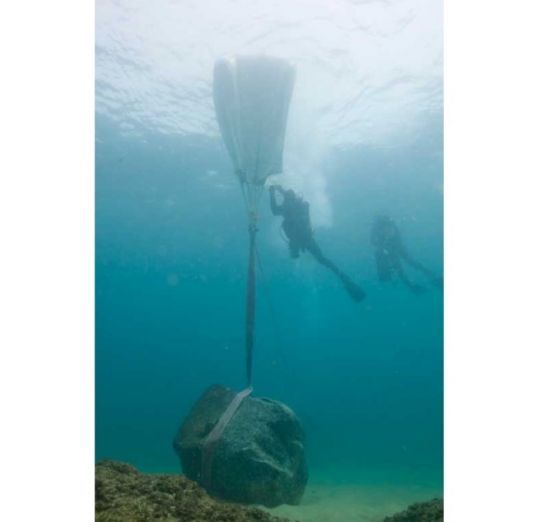
Since 2012, CEAlex has initiated a major program to digitize the surface of the site using photogrammetry to obtain a precise 3D model. In 2020, the DSM (digital surface model) covers an area of around 10,250 m2, representing around 65% of the archaeological site. The descriptive database records 3,040 blocks. These results make the underwater site of the Alexandria lighthouse one of the most extensive in the field of submerged architecture.

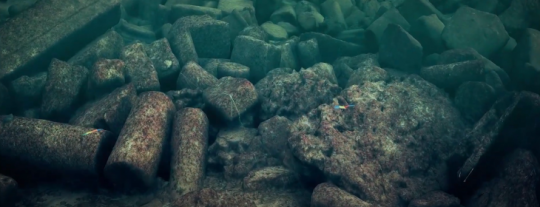
Thirty-six pieces can be seen in downtown Alexandria, at the open-air museum of the Roman Theatre of Alexandria and in front of the Bibliotheca Alexandrina. Fragments of colossal statues, sphinxes and obelisks are grouped together at the entrance to the site, along with the lighthouse inscription.
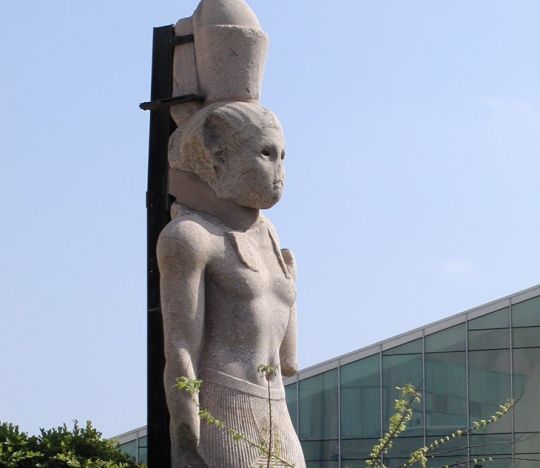
The Alexandria lighthouse has been depicted many times over, in different countries and eras.
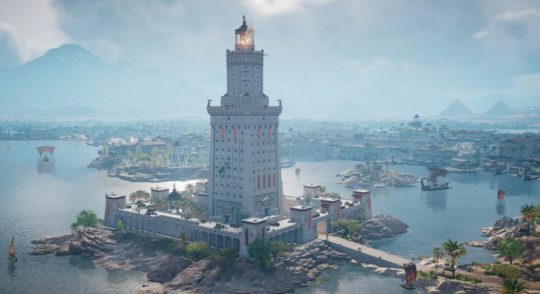
Finally, an interesting anecdote: although Alexandria's lighthouse was probably an admired and imitated marvel, it seems not to have always succeeded in assisting sailors. Archaeologists have identified over 40 shipwrecks in the area of Alexandria's ancient port. But how many other disasters could have occurred without the presence of this great guiding lighthouse?
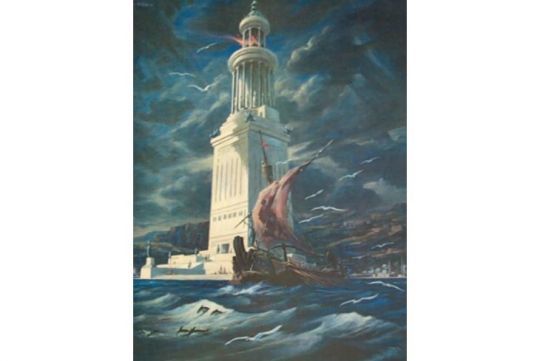

 /
/ 